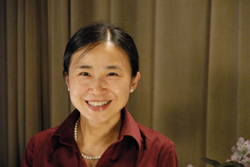Can China successfully educate its future workforce?

Migrant students play during a mid-day break at Dexin School in Kunming, China. (Photo by Sarah Butrymowicz)
KUNMING, China—With dirt streaking their faces and clothes, children shout and run around a concrete courtyard that doubles as a playground at the Dexin School. Minutes later, they squirm in their seats after being corralled into classrooms with bars on the windows. Their voices can be heard disrupting their English class as American volunteers try to get them to repeat phrases like “You are beautiful.”
This private school in a provincial capital of southern China educates some of the country’s most disadvantaged students. They are all so-called “migrant” students who have moved with their parents from the countryside to cities. At Dexin, volunteers and often-under qualified teachers work on a shoestring budget with impoverished
Q&A with Henan Cheng: What happens to migrant children in Chinese public schools?
The flood of China’s rural residents into cities has resulted in millions of migrants living illegally in urban areas where they are often denied basic social services, like education. In 2006, the central government made it clear that compulsory education for migrant children is the responsibility of local governments, and that migrant children should be allowed into public schools instead of relegated to private ones. But that doesn’t always happen—and, even when it does, a lot of inequality remains.
Henan Cheng, an assistant professor in Loyola University Chicago’s School of Education, recently published research about Kunming, a provincial capital city in southern China, where about 50 percent of migrant children

